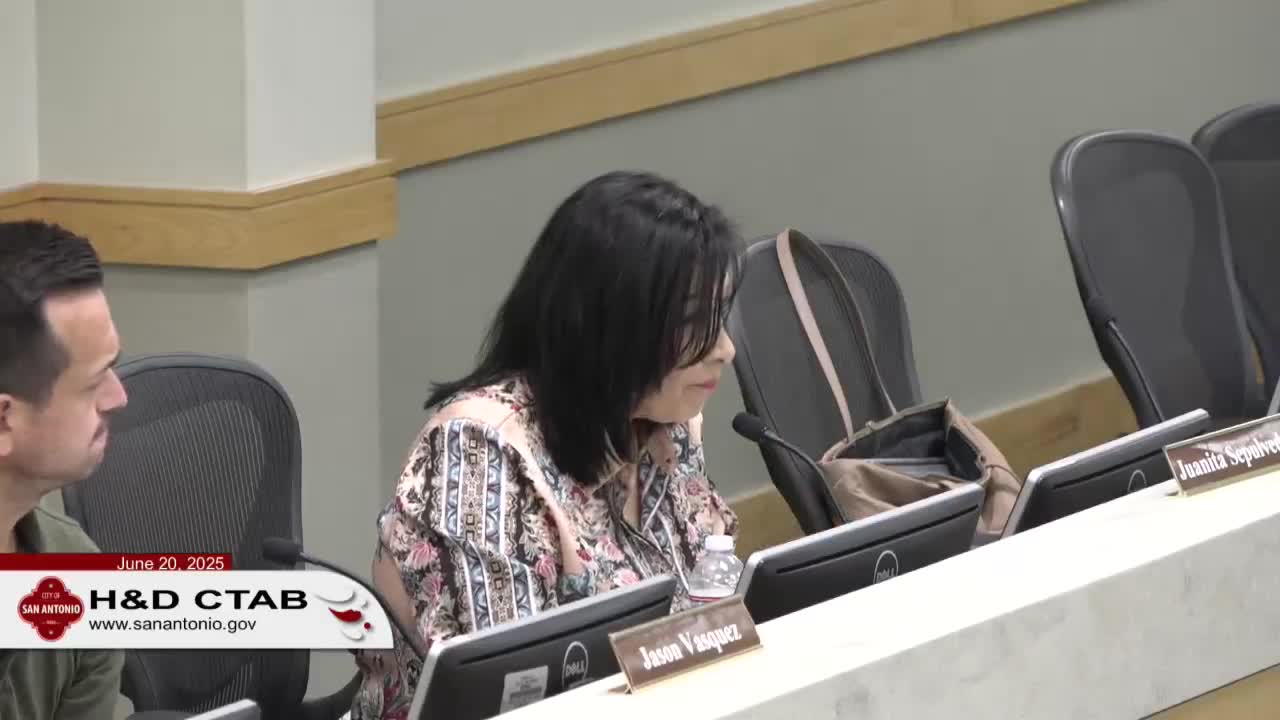Historic districts debate sidewalk design guidelines for consistency
June 20, 2025 | San Antonio, Bexar County, Texas
This article was created by AI summarizing key points discussed. AI makes mistakes, so for full details and context, please refer to the video of the full meeting. Please report any errors so we can fix them. Report an error »

In the heart of San Antonio, a recent meeting of the Historic Compliance and Technical Advisory Board brought to light the delicate balance between preserving the past and accommodating modern needs. As members gathered under the bright lights of city hall, discussions centered on the guidelines governing historic districts, particularly regarding sidewalk design and the integrity of neighborhood aesthetics.
One key point of contention arose around the guidelines for walkways in historic areas. A board member inquired whether there was flexibility in the rules, especially concerning the use of permeable materials. The response highlighted that while the guidelines do address permeability in terms of overall yard coverage, they are less specific about sidewalk design. The board emphasized that new walkways should reflect the historical development patterns of the area, maintaining consistency with existing structures.
In neighborhoods like Monte Vista and Monticello Park, where the suburban layout has established a uniformity in driveways and walkways, the board is keen on preserving that character. However, in older districts such as King William and Lavaca, the historical context is more varied, with less emphasis on solid concrete pathways. This diversity in design reflects the evolution of these neighborhoods over time.
The board's recommendation was clear: any new walkway should align with the historical guidelines, ensuring that the character of the district remains intact. Yet, they acknowledged that simply maintaining existing structures may not address underlying issues. In some cases, repairs or even reconfigurations might be necessary to meet both aesthetic and functional needs.
As the meeting concluded, it became evident that the board's commitment to preserving San Antonio's rich history is matched by a recognition of the need for thoughtful adaptation. The discussions underscored the ongoing challenge of honoring the past while paving the way for a vibrant future in these cherished neighborhoods.
One key point of contention arose around the guidelines for walkways in historic areas. A board member inquired whether there was flexibility in the rules, especially concerning the use of permeable materials. The response highlighted that while the guidelines do address permeability in terms of overall yard coverage, they are less specific about sidewalk design. The board emphasized that new walkways should reflect the historical development patterns of the area, maintaining consistency with existing structures.
In neighborhoods like Monte Vista and Monticello Park, where the suburban layout has established a uniformity in driveways and walkways, the board is keen on preserving that character. However, in older districts such as King William and Lavaca, the historical context is more varied, with less emphasis on solid concrete pathways. This diversity in design reflects the evolution of these neighborhoods over time.
The board's recommendation was clear: any new walkway should align with the historical guidelines, ensuring that the character of the district remains intact. Yet, they acknowledged that simply maintaining existing structures may not address underlying issues. In some cases, repairs or even reconfigurations might be necessary to meet both aesthetic and functional needs.
As the meeting concluded, it became evident that the board's commitment to preserving San Antonio's rich history is matched by a recognition of the need for thoughtful adaptation. The discussions underscored the ongoing challenge of honoring the past while paving the way for a vibrant future in these cherished neighborhoods.
View full meeting
This article is based on a recent meeting—watch the full video and explore the complete transcript for deeper insights into the discussion.
View full meeting
